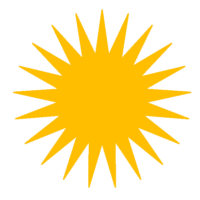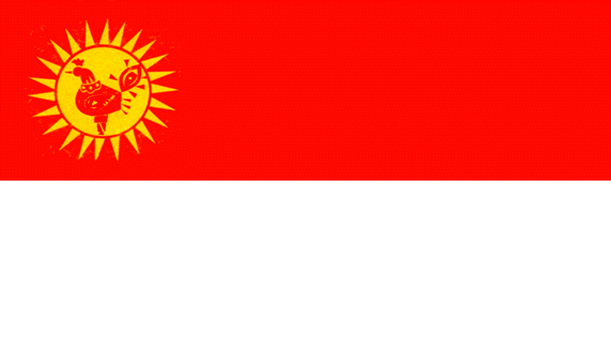|
Otevan
Otevan () is a village in the Metsadzor Municipality of the Aragatsotn Province of Armenia. The village is home to a 12th-century ruined Armenian church as well as the ruins of a fortress and is mostly populated by Yezidis. See also *Genocide of Yazidis by ISIL *Yazidis in Armenia Yazidis form the largest ethnic minority in Armenia. Yazidis settled in the territory of modern-day Armenia mainly in the 19th and early 20th centuries, fleeing religious persecution by the Ottoman Empire. While Yazidis were counted as Kurds in ... References *Report of the results of the 2001 Armenian Census*Kiesling, ''Rediscovering Armenia'', p. 18, available online at thUS embassy to Armenia's website Populated places in Aragatsotn Province Yazidi populated places in Armenia {{Aragatsotn-geo-stub ... [...More Info...] [...Related Items...] OR: [Wikipedia] [Google] [Baidu] |
Aragatsotn Province
Aragatsotn (, ) is a administrative divisions of Armenia, province (''Marz (country subdivision), marz'') of Armenia. It is located in the western part of the country. The capital and largest city of the province is the town of Ashtarak. The Statistical Committee of Armenia reported its population was 128,941 in the 2022 census. Etymology Literally meaning "the foot of Mount Aragats, Aragats" (the highest mountain of Armenia), it is named after the Aragatsotn canton of the historic Ayrarat province of Kingdom of Armenia (antiquity), Ancient Armenia, ruled by the Amatuni noble family under the reign of the Arsacid dynasty of Armenia, Arsacid dynasty. Geography Aragatsotn Province occupies the northwestern part of Armenia and covers an area of 2,756 km2 (9.3% of the total area of Armenia). It has internal borders with Shirak Province from the north, Lori Province from the northeast, Kotayk Province from the east, Armavir Province from the south and the city of Yerevan from ... [...More Info...] [...Related Items...] OR: [Wikipedia] [Google] [Baidu] |
Municipalities Of Armenia
A municipality in Armenia referred to as community ( ''hamaynk'', plural: ''hamaynkner''), is an administrative subdivision consisting of a settlement ( ''bnakavayr'') or a group of settlements ( ''bnakavayrer'') that enjoys local self-government. The settlements are classified as either towns ( ''kaghakner'', singular ''kaghak'') or villages ( ''gyugher'', singular ( ''gyugh''). The administrative centre of a community could either be an urban settlement (town) or a rural settlement (village). Two-thirds of the population are now urbanized. As of 2017, 63.6% of Armenians live in urban areas as compared to 36.4% in rural. As of the end of 2017, Armenia has 503 municipal communities (including Yerevan) of which 46 are urban and 457 are rural. The capital, Yerevan, also has the status of a community. Each municipality bears the same name as its administrative centre, with the exception of 7 municipalities, of which 4 are located in Shirak Province (Ani Municipality with its c ... [...More Info...] [...Related Items...] OR: [Wikipedia] [Google] [Baidu] |
Armenia
Armenia, officially the Republic of Armenia, is a landlocked country in the Armenian Highlands of West Asia. It is a part of the Caucasus region and is bordered by Turkey to the west, Georgia (country), Georgia to the north and Azerbaijan to the east, and Iran and the Azerbaijani exclave of Nakhchivan Autonomous Republic, Nakhchivan to the south. Yerevan is the Capital city, capital, largest city and Economy of Armenia, financial center. The Armenian Highlands has been home to the Hayasa-Azzi, Shupria and Nairi. By at least 600 BC, an archaic form of Proto-Armenian language, Proto-Armenian, an Indo-European languages, Indo-European language, had diffused into the Armenian Highlands.Robert Drews (2017). ''Militarism and the Indo-Europeanizing of Europe''. Routledge. . p. 228: "The vernacular of the Great Kingdom of Biainili was quite certainly Armenian. The Armenian language was obviously the region's vernacular in the fifth century BC, when Persian commanders and Greek writers ... [...More Info...] [...Related Items...] OR: [Wikipedia] [Google] [Baidu] |
Provinces Of Armenia
Armenia is subdivided into eleven administrative divisions. Of these, ten are provinces, known as () or in the singular form () in Armenian. Yerevan is treated separately and granted special administrative status as the country's capital. The chief executive in each of 10 ''marz''es is the ''marzpet'', appointed by the government of Armenia. In Yerevan, the chief executive is the mayor, elected by the Yerevan City Council. First-level administrative divisions The following is a list of the provinces with population, area, and density information. Figures are from the Statistical Committee of Armenia. The area of the Gegharkunik Province includes Lake Sevan which covers of its territory: Municipalities (''hamaynkner'') Within each province of the republic, there are municipal communities (''hamaynkner'', singular ''hamaynk''), currently considered the second-level administrative division in Armenia. Each municipality - known officially as community, either rural or ... [...More Info...] [...Related Items...] OR: [Wikipedia] [Google] [Baidu] |
Yezidi
Yazidis, also spelled Yezidis (; ), are a Kurdish-speaking endogamous religious group indigenous to Kurdistan, a geographical region in Western Asia that includes parts of Iraq, Syria, Turkey, and Iran. The majority of Yazidis remaining in the Middle East today live in Iraq, primarily in the governorates of Nineveh and Duhok. There is a disagreement among scholars and in Yazidi circles on whether the Yazidi people are a distinct ethnoreligious group or a religious sub-group of the Kurds, an Iranic ethnic group. Yazidism is the ethnic religion of the Yazidi people and is monotheistic in nature, having roots in a pre-Zoroastrian Iranic faith. Since the spread of Islam began with the early Muslim conquests of the 7th–8th centuries, Yazidis have faced persecution by Arabs and later by Turks, as they have commonly been charged with heresy by Muslim clerics for their religious practices. Despite various state-sanctions in the Ottoman Empire, Yazidis historically hav ... [...More Info...] [...Related Items...] OR: [Wikipedia] [Google] [Baidu] |
Genocide Of Yazidis By ISIL
The Yazidi genocide was perpetrated by the Islamic State in Iraq and Syria between 2014 and 2017. It was characterized by massacres, genocidal rape, and forced conversions to Islam. The Yazidis are a Kurdish-speaking people who are indigenous to Kurdistan who practice Yazidism, a monotheistic Iranian ethnoreligion derived from the Indo-Iranian tradition. Over a period of three years, Islamic State militants trafficked thousands of Yazidi women and girls and killed thousands of Yazidi men; the United Nations reported that the Islamic State killed about 5,000 Yazidis and trafficked about 10,800 Yazidi women and girls in a "forced conversion campaign" throughout Iraq. By 2015, upwards of 71% of the global Yazidi population was displaced by the genocide, with most Yazidi refugees having fled to Iraq's Kurdistan Region and Syria's Rojava. The persecution of Yazidis, along with other religious minorities, took place after the Islamic State's Northern Iraq offensive of June 2014. ... [...More Info...] [...Related Items...] OR: [Wikipedia] [Google] [Baidu] |
Yazidis In Armenia
Yazidis form the largest ethnic minority in Armenia. Yazidis settled in the territory of modern-day Armenia mainly in the 19th and early 20th centuries, fleeing religious persecution by the Ottoman Empire. While Yazidis were counted as Kurds in censuses for much of the Soviet period, they are currently recognized as a separate ethnic group in Armenia (for more on the relationship between Yazidis and Kurdish identity, see Yazidis). According to the 2022 census, around 31,079 Yazidis live in Armenia. The Election Code of Armenia guarantees one seat in the National Assembly for a representative of the Yazidi community. Several religious Yazidi temples exist in Armenia, including the world's largest Yazidi temple Quba Mere Diwane in Aknalich, which was opened in 2020. In 2021, a Yazidi national theater was opened in Vagharshapat. History Early 20th century Many Yazidis came to the Russian Empire (now the territory of Armenia and Georgia) under their leader Temur Agha during the ... [...More Info...] [...Related Items...] OR: [Wikipedia] [Google] [Baidu] |
Populated Places In Aragatsotn Province
Population is a set of humans or other organisms in a given region or area. Governments conduct a census to quantify the resident population size within a given jurisdiction. The term is also applied to non-human animals, microorganisms, and plants, and has specific uses within such fields as ecology and genetics. Etymology The word ''population'' is derived from the Late Latin ''populatio'' (a people, a multitude), which itself is derived from the Latin word ''populus'' (a people). Use of the term Social sciences In sociology and population geography, population refers to a group of human beings with some predefined feature in common, such as location, race, ethnicity, nationality, or religion. Ecology In ecology, a population is a group of organisms of the same species which inhabit the same geographical area and are capable of interbreeding. The area of a sexual population is the area where interbreeding is possible between any opposite-sex pair within the ... [...More Info...] [...Related Items...] OR: [Wikipedia] [Google] [Baidu] |





